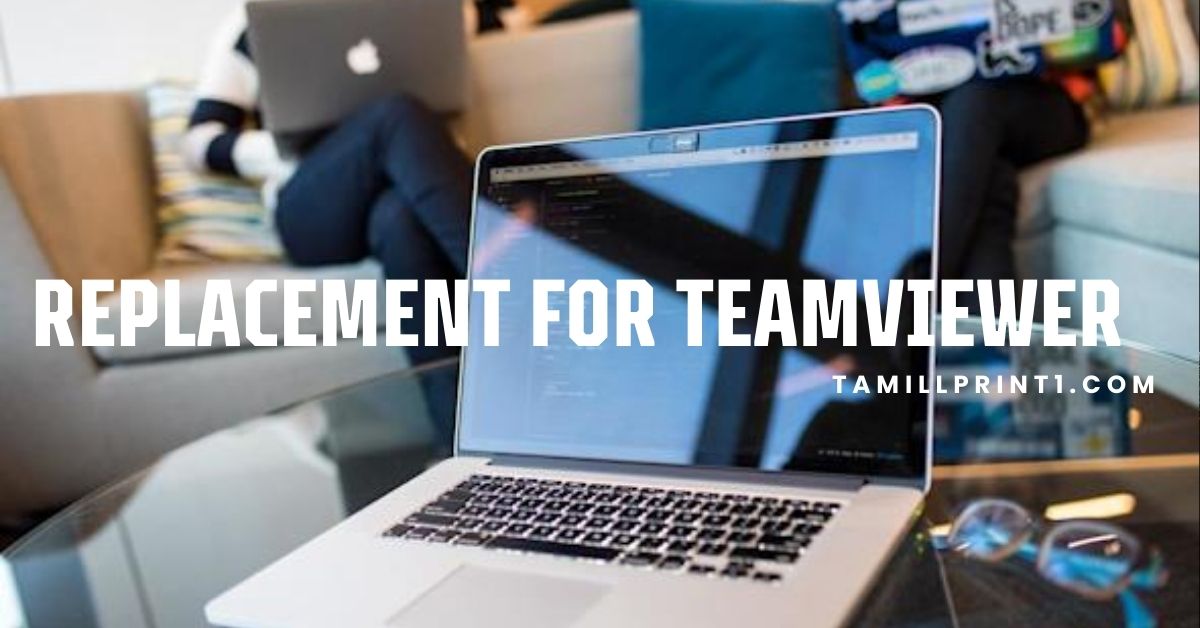TeamViewer has long been one of the most popular remote desktop applications, offering features like file sharing, remote support, and secure connections. However, many users seek a replacement for TeamViewer due to cost, licensing restrictions, or security concerns.
In this comprehensive guide, we explore the best alternatives to TeamViewer, breaking down their features, pros and cons, pricing, and use cases. Whether you’re looking for a free, open-source alternative or a high-performance remote access tool, we have you covered.
1. RustDesk – The Best Open-Source Alternative
RustDesk is an open-source remote access and control software that provides users with the flexibility of self-hosting and encrypted connections. It offers a simple setup with features that rival commercial alternatives.
Key Features:
- Cross-Platform Support: RustDesk works seamlessly across Windows, macOS, Linux, Android, and iOS.
- End-to-End Encryption: Ensures secure communication and prevents unauthorized access.
- Self-Hosting Option: Allows users to run their own RustDesk server for better control and privacy.
- File Transfer: Easily move files between connected devices without hassle.
- Low Latency Performance: Provides smooth remote access, even on low-bandwidth connections.
- Chat Functionality: Built-in chat feature for communication between remote and local users.
- Clipboard Synchronization: Copy-paste between local and remote computers.

Why Choose RustDesk?
RustDesk is ideal for users who prioritize privacy and security by self-hosting their remote access solutions. It is completely free, open-source, and gives users full control.
Pros: ✔ Free and open-source. ✔ No licensing restrictions. ✔ Strong encryption for security. ✔ Lightweight and easy to use. ✔ Highly customizable.
Cons: ✘ Self-hosting requires technical expertise. ✘ Not as polished as commercial alternatives. ✘ Limited enterprise support.
Best For:
- Users looking for a free and secure remote access tool.
- Businesses that need self-hosted remote access.
- Individuals prioritizing open-source software.
Also Read: Quotela.net: Your Ultimate Source for Daily Inspiration
2. Splashtop – High-Performance Remote Access
Splashtop is a premium remote desktop solution designed for businesses, IT professionals, and personal users. It offers high-speed remote access with strong security features.
Key Features:
- Multi-Device Support: Compatible with Windows, macOS, Linux, ChromeOS, Android, and iOS.
- Robust Security: Implements multi-factor authentication and device verification for added security.
- Remote Printing & File Transfer: Easily access and print files remotely.
- High-Quality Streaming: Low-latency sessions with high-definition audio and video streaming.
- Session Recording: Useful for troubleshooting, training, or compliance.
- Support for Multiple Users: IT teams can provide remote support to multiple clients simultaneously.
Why Choose Splashtop?
Splashtop is an excellent choice for business users and IT professionals needing secure, high-quality remote access at an affordable price.
Pros: ✔ Affordable pricing compared to TeamViewer. ✔ Smooth performance with minimal lag. ✔ Strong security features. ✔ Supports multiple concurrent sessions. ✔ Simple setup and intuitive interface.
Cons: ✘ Some advanced features require a subscription. ✘ Free version has limited functionality. ✘ Requires internet access for remote connections.
Best For:
- Businesses and enterprises needing secure remote access.
- IT support teams and managed service providers.
- Professionals requiring remote access for high-performance tasks.
Also Read: www.quotela.net: A Treasure Trove of Inspirational Quotes
3. Remmina – Best for Linux Users
Remmina is a free, open-source remote desktop application that supports multiple protocols, making it an ideal replacement for TeamViewer on Linux.
Key Features:
- Supports Multiple Protocols: RDP, VNC, SSH, NX, XDMCP, SPICE, and EXEC, making it versatile.
- Tabbed Interface: Manage multiple remote sessions in a single window.
- Security-Focused: Uses SSH tunneling and TLS encryption for secure connections.
- Multi-Monitor Support: Easily switch between monitors.
- File Transfer & Clipboard Sharing: Seamless file and data sharing.
- Plugin Support: Expand functionality through additional plugins.
Why Choose Remmina?
Linux users looking for a lightweight, feature-rich remote desktop solution will find Remmina to be a perfect choice.
Pros: ✔ Completely free and open-source. ✔ Extensive protocol support. ✔ Secure and flexible. ✔ Customizable through plugins. ✔ Ideal for Linux users.
Cons: ✘ No official support for Windows/macOS. ✘ Requires technical knowledge to configure. ✘ UI is not as modern as commercial tools.
Best For:
- Linux users needing a robust remote access tool.
- System administrators working with multiple protocols.
- IT professionals managing Linux servers remotely.
4. AnyDesk – A Fast and Lightweight Alternative
AnyDesk is known for its speed and minimal resource usage, making it one of the best alternatives for TeamViewer.
Also Read:Lync Conf Mods: The Ultimate Guide
Key Features:
- High-Speed Remote Access: Ultra-low latency with high frame rates.
- Cross-Platform Compatibility: Supports Windows, macOS, Linux, Android, and iOS.
- Banking-Grade Security: Uses TLS 1.2 encryption and 2FA.
- Customizable Interface: Tailor the UI to your needs.
- Efficient Resource Usage: Runs smoothly even on low-end devices.
- Mobile Device Support: Access mobile devices remotely.
Why Choose AnyDesk?
If you need a fast, lightweight, and secure remote desktop solution, AnyDesk is an excellent choice.
Pros: ✔ Free for personal use. ✔ Fast and efficient. ✔ Simple and user-friendly interface. ✔ Secure connections. ✔ Supports file transfer and clipboard sync.
Cons: ✘ Free version has limited commercial use. ✘ Some advanced features require a paid license. ✘ No built-in session recording.
Best For:
- Users who need a fast and responsive remote access tool.
- Businesses looking for an affordable TeamViewer alternative.
- IT professionals and remote workers.
5. Chrome Remote Desktop – Best for Google Users
Chrome Remote Desktop is a free and easy-to-use remote access tool that runs through the Google Chrome browser.
Key Features:
- Simple Setup: No additional software required.
- Cross-Platform Compatibility: Works on Windows, macOS, Linux, and ChromeOS.
- Google Integration: Syncs with Google accounts for seamless access.
- Secure Encryption: Uses Google’s secure infrastructure.
- Completely Free: No cost for using the service.
Why Choose Chrome Remote Desktop?
Ideal for casual users who need a simple and free remote access solution within the Google ecosystem.
Pros: ✔ 100% free. ✔ Easy to set up and use. ✔ Works on multiple devices. ✔ Secure Google integration.
Cons: ✘ Limited features compared to other remote desktop solutions. ✘ No built-in file transfer feature.
Also Read: EJU4857: A Complete Guide to Your Journey
FAQs
What is the best free replacement for TeamViewer?
RustDesk and Chrome Remote Desktop are among the best free alternatives, offering secure and efficient remote access without licensing restrictions.
Which remote desktop software is best for Linux users?
Remmina is highly recommended for Linux users due to its support for multiple protocols and security features.
Is AnyDesk better than TeamViewer?
AnyDesk is faster and more lightweight, making it ideal for users who prioritize performance and simplicity over extensive features.
What is the most secure remote desktop software?
RustDesk and AnyDesk offer strong encryption and security features, ensuring safe remote connections.
Is Splashtop better for businesses than TeamViewer?
Yes, Splashtop provides high-performance remote access at a more affordable price, making it a great choice for businesses and IT support teams.
Conclusion
Finding the best replacement for TeamViewer depends on your needs. If you prefer an open-source, self-hosted solution, RustDesk is a fantastic choice. For business users, Splashtop offers robust performance at a lower cost. Linux users should consider Remmina, while AnyDesk provides a fast and lightweight alternative.
Each alternative has its strengths, so choose the one that best suits your workflow and security requirements.







